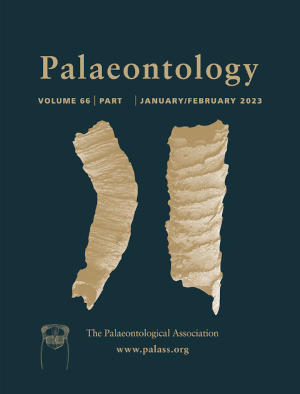Article: Phylogenetic structure of the extinction and biotic factors explaining differential survival of terrestrial notosuchians at the Cretaceous–Palaeogene crisis
Publication: Palaeontology
Volume:
66
Part:
1
Publication Date:
2023
Article number:
e12638
Author(s):
Paul Aubier, Stéphane Jouve, Johann Schnyder, and Jorge Cubo
Abstract
Abstract Although the clade Crocodylomorpha is represented by few extant species (Crocodylia), it has a rich fossil record. Hundreds of species, adapted to terrestrial, semi-aquatic and marine environments, have existed over more than 200 million years. Numerous studies have attempted to characterize the factors driving the diversification and extinction events of Crocodylomorpha, resulting in ambiguous and even contradictory conclusions, which points to the need for phylogenetically and temporally smaller-scaled studies. Here, we focus on differential survival at the Cretaceous–Palaeogene (K–Pg) crisis of Notosuchia, a diverse clade of mostly terrestrial Crocodylomorpha that achieved great diversity during the Cretaceous. More precisely, we tested the effect of body size and palaeotemperatures on notosuchian survival probability during the K–Pg crisis as well as the effect of diet on the evolution of their body size. We find that Notosuchia showed an evolutionary trend towards larger body sizes through time, associated with a shift from an omnivorous to a carnivorous diet. This may explain why sebecids were the only notosuchians to survive the K–Pg crisis. We also corroborate the conclusions of previous studies that detected a Lagerstätten effect occurring in the Adamantina Formation (Upper Cretaceous, Brazil, Bauru Group). This work confirms the value of more finely-scaled macroevolutionary studies for understanding the history of a rich and complex group such as Crocodylomorpha.
